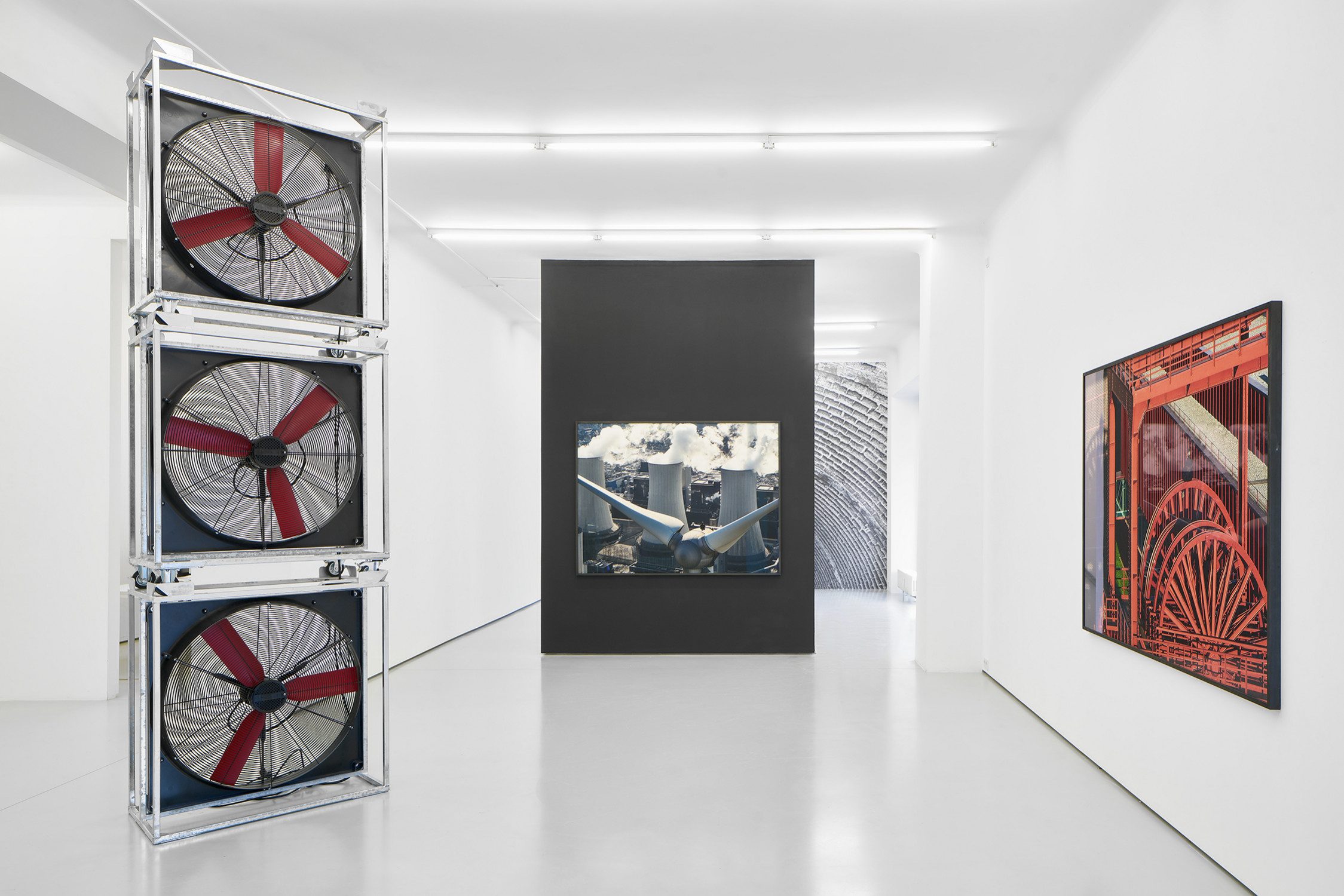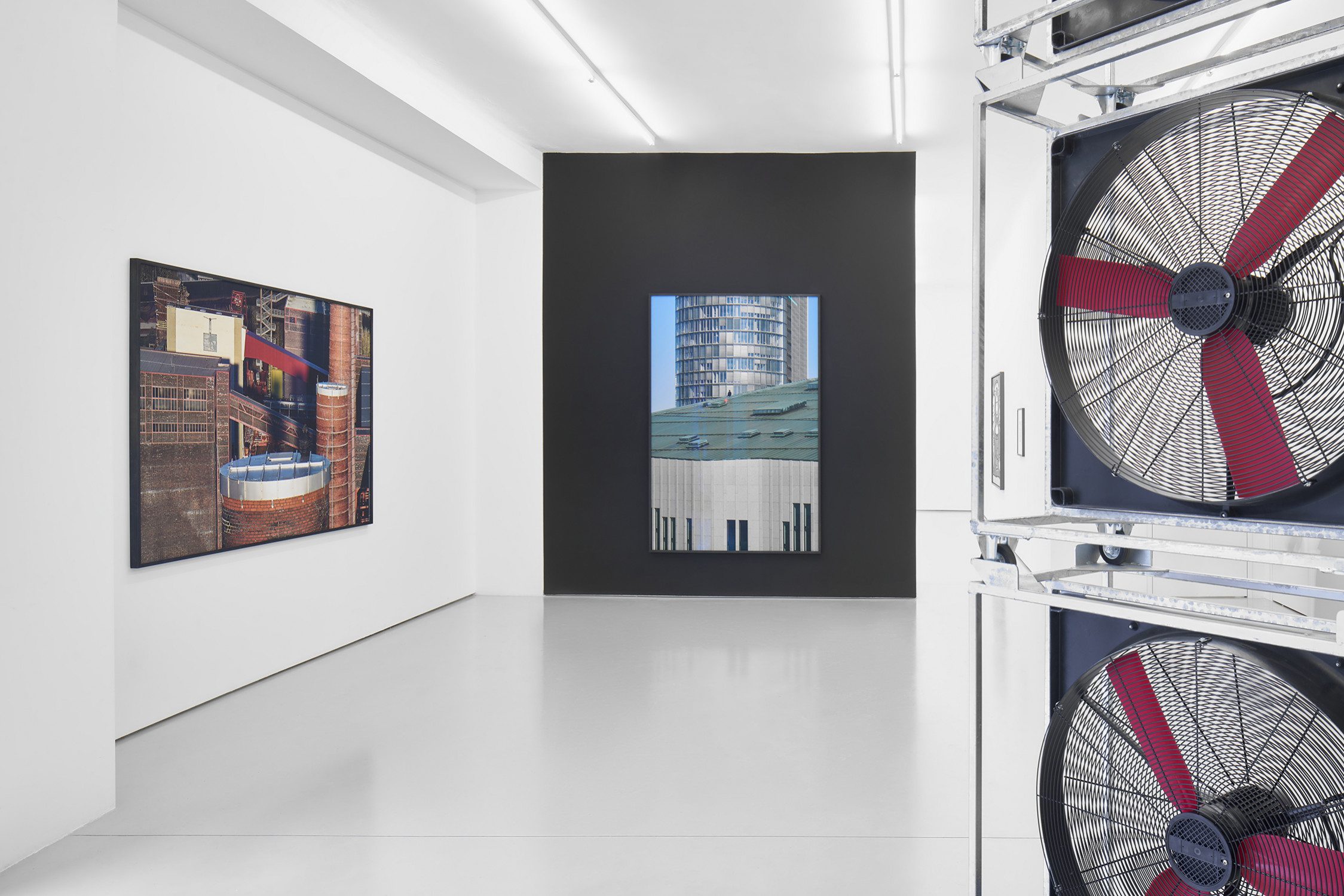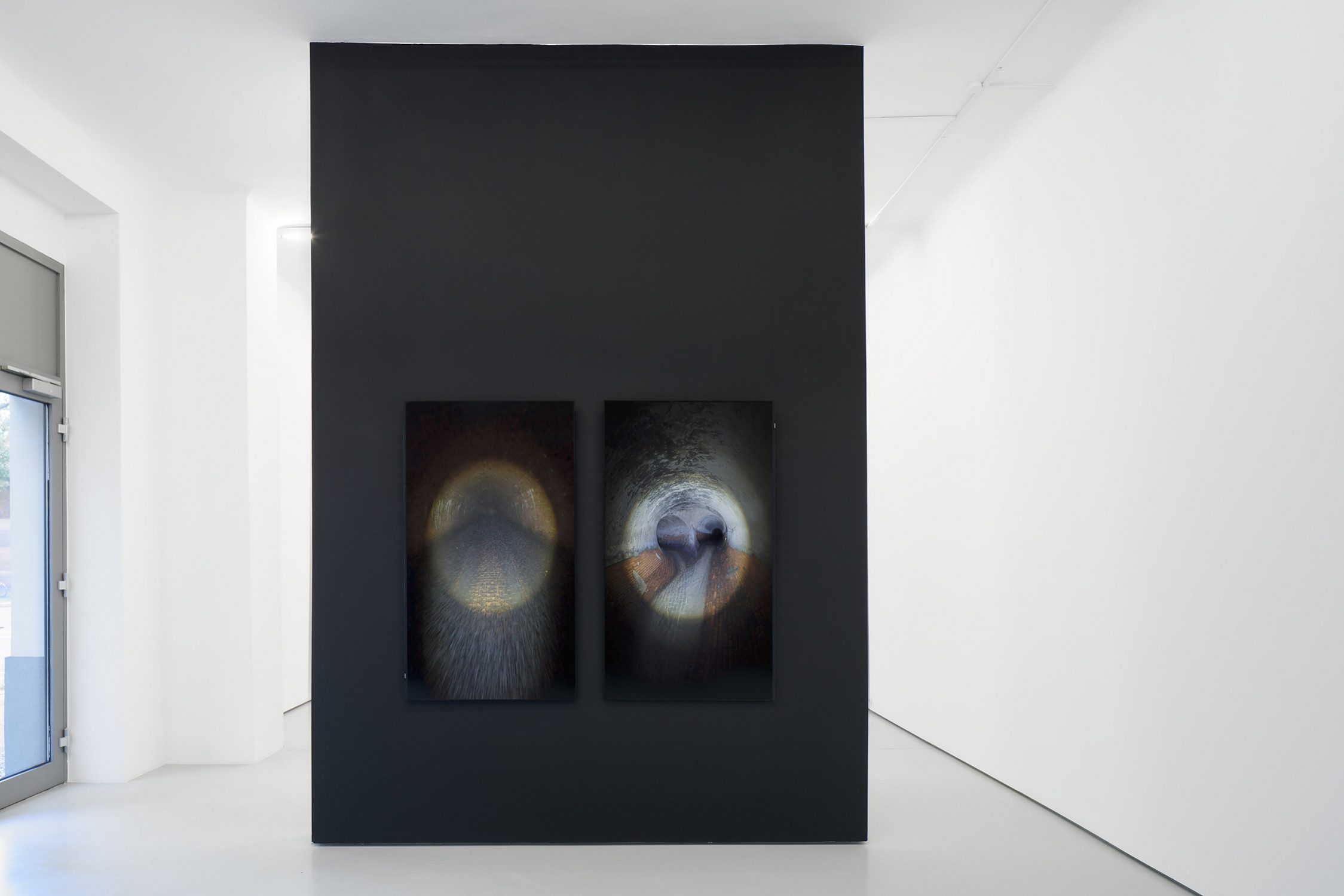




In Mischa Leinkauf’s Trans-Scenic Practice, spaces become scenes for images, concerned with the structural staging of spaces that are often public, yet restricted in access or hidden. His practice is one of passing through, traversing, or overcoming constructed orders. The perspective shifts, allowing connections to appear in a different constellation, the fixed becomes permeable.
It is not possible to immediately identify the sound that one perceives on the street even before entering Mischa Leinkauf’s exhibition. As if we were standing in front of a club, we hear the music, sense the vibration of the bass. They emerge from the gully from below upwards. The acoustic installation Re:Bunker (2022) by Mischa Leinkauf and Ed Davenport incorporates the public space in front of the gallery as an exhibition space. It is both an irritation and an invitation: what kind of spaces open up underneath the pavement? While musically exploring the relationship and history of Berlin bunkers and their appropriation by techno and club culture, it also marks a threshold between inside and outside, above and below ground. Both the passer-by and the visitor are addressed here.
Upon entering the exhibition, a storm hits one’s own body. A column of wind wheels, from the ceiling to the floor of the gallery, stands in the middle of the room and faces you. At regular intervals, they circulate the air of the exhibition space with a deafening noise. Here, contemplation is understood not only visually but as an acoustic and bodily experience, reflecting the physical practice with which Mischa Leinkauf works through the spaces that are the subject of his works. At the same time, is the column, are the three Ready-Mades stacked on top of each other, perhaps also an aesthetic reference to the relationship between industrial culture and the culture industry, which are particularly close to each other, not only in the Ruhr region, setting to the following reflections.
Physical Dialectics (2022) is a series of photographs Mischa Leinkauf developed in the Ruhr region, once Germany’s coal and steel centre. For the series, he has gained access to the colossal architectures of former and contemporary industry, cultural buildings, and residential complexes, becoming an observer of a multi-layered juxtaposition of human labour over the last 100 years, hidden vertically from deep underground to high behind the modern glass and steel facades of post-industrial work. Common to all the images is a solitary figure seen from behind, which provides us with access to what we see, which is a mediator and places us in relation to it. The individual sits high above and looks out with us into the landscape and the times. Also without wings, it refers to the figure of the “angel of history”, described by Walter Benjamin as one who, driven forward by the storm of progress, looks back at the events of the past.
Shot from the air with telephoto lenses, Mischa Leinkauf achieves a spatial and temporal concentration: strangely out of perspective, spaces removed from depth, architectural situations that tell of past and present, energy production and exploitation, of work and standstill.
To focus attention, to physically enter into dialogue with the environment, to climb, to subvert, to overcome, to explore interventionistically and performatively are recurring strategies in Mischa Leinkauf’s practice. He is always concerned with adopting a different standpoint from which orders, architectural and political settings, or history can be observed. The perspective from which we look at realities tells a lot about their veritableness
The wall-filling view into a smokestack with its deposits and layers leads us from the lofty heights back down into the depths, and the tour through the exhibition concludes with the video diptych As Below, So Above (2022), which propels us through subterranean passages. Like endoscopic images, the camera moves through Berlin’s tunnels and supply ducts. Normally hidden from events on the surface, they are intended for the rainwater drainage system. Down there, perception becomes physical again, the climate changes, and the wandering gaze registers, seeks, waits, moves towards something – itself? Are we in a labyrinth or are we crossing the large and small underground waters to reach the rave we heard at the beginning?
Kim Gabriel